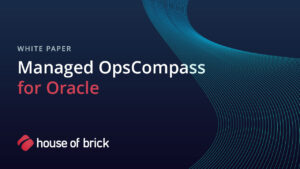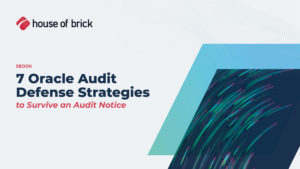When IT teams make configuration changes in SQL Server, the focus is often on resilience, uptime, and performance. But what might look like a purely technical update can also be a material licensing change that auditors will notice.
Enabling High Availability Disaster Recovery (HADR) in SQL Server is a prime example. It strengthens operations but also shifts your licensing requirements in ways that can trigger unexpected costs.
The Technical Side of SQL Server HADR
High Availability Disaster Recovery (HADR) is designed to:
- Protect SQL Server databases from downtime.
- Enable failover in case of hardware or infrastructure issues.
- Improve recovery objectives across primary and secondary nodes.
For DBAs, enabling HADR feels like a smart technical move. It reduces operational risk and provides peace of mind for mission-critical workloads.
Why This Is Also a Licensing Change
Here’s the catch: enabling HADR can alter your SQL Server licensing obligations.
- In most cases, only SQL Server Enterprise Edition supports advanced HADR features.
- Without Software Assurance (SA), failover servers must also be fully licensed, meaning both primary and secondary nodes may require licensing.
- On VMware or cloud platforms, licensing can extend across multiple hosts, multiplying the impact of a single configuration change.
That means a DBA flipping the switch on HADR is not just improving uptime. They may have just created a licensing event.
The Risk of Missing This Change
The biggest risk is not the change itself. It is that procurement and compliance teams may never know it happened.
- DBAs and infra teams focus on stability.
- Procurement teams focus on entitlements and contracts.
- Without visibility across both, organizations risk being blindsided during an Oracle or Microsoft audit.
- An auditor does not care that the DBA’s intent was to improve availability. They will simply flag unlicensed use and calculate penalties.
Other Material Changes That Matter
SQL Server HADR is not the only example of a technical update creating a compliance issue. Infrastructure changes such as memory increases, VM migrations, or enabling advanced features can all affect licensing and costs.
These changes are easy to overlook when teams focus on performance or availability, but they can have downstream financial and compliance impacts if not detected and managed.
How Opscompass Catches These Changes
Opscompass is built to detect and explain these kinds of risks in real time:
- Identifies drift events across databases and infrastructure.
- Explains what changed and why it matters for licensing, compliance, or cost.
- Provides immediate visibility to DBAs, IT managers, and procurement teams so everyone stays aligned.
With this intelligence, what might have been a surprise audit finding becomes a managed event with full documentation.
Real-World Benefits
- Avoid audit penalties by catching licensing changes before auditors do.
- Reduce cost surprises by understanding how infrastructure tweaks impact licensing.
- Improve collaboration between technical and business teams with clear, shared visibility.
- Stay audit-ready with continuous monitoring of SQL Server, Oracle, VMware, and cloud environments.
Conclusion
Enabling SQL Server HADR is more than a technical configuration. It is a material licensing event that can have real financial consequences if overlooked. Opscompass makes sure you catch these changes in real time with the context needed to act before it becomes an audit problem.
Get ahead of SQL Server licensing risks with Opscompass. Let’s Talk!
Frequently Asked Questions
SQL Server HADR (High Availability Disaster Recovery) provides failover capabilities to reduce downtime and improve resilience.
Yes, depending on edition and Software Assurance rights, enabling HADR can trigger new licensing requirements.
Opscompass continuously monitors databases and infrastructure, flagging changes like HADR enablement and explaining the risk.
Organizations may face unbudgeted license purchases, backdated support costs, and penalties.
By using Opscompass to detect, explain, and document changes that impact licensing, compliance, and cost.







